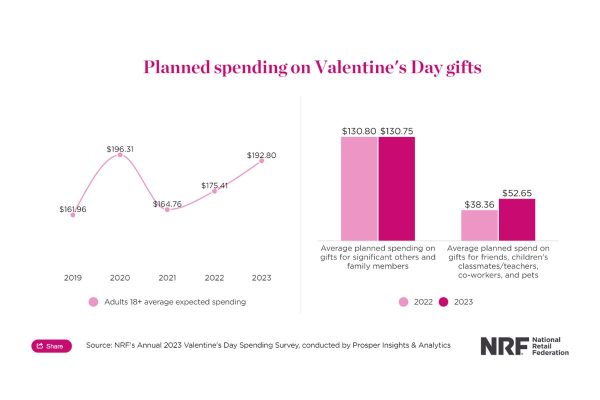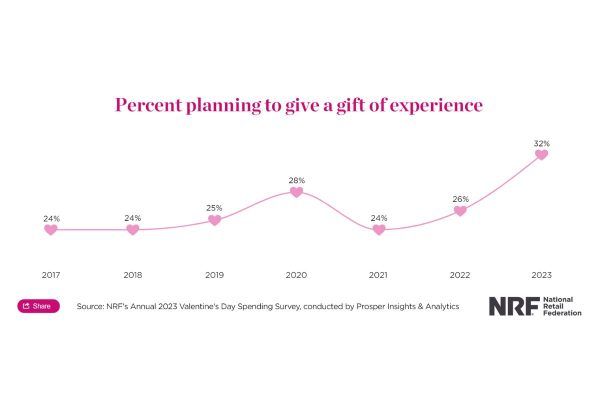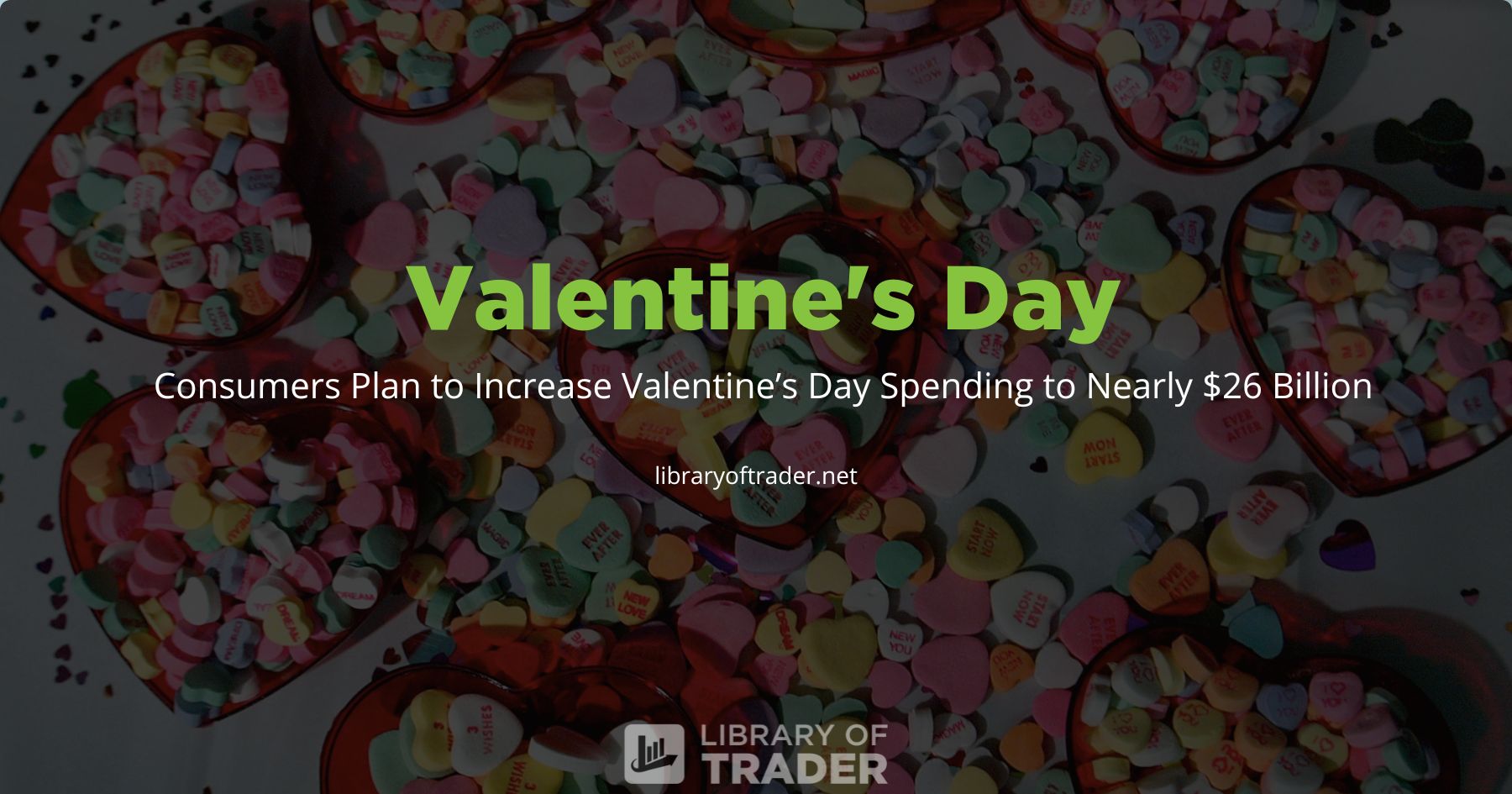Valentine’s Day consumer expenditure is anticipated to rise by 8% to $26 billion in 2023, making it the second-highest year ever. Prosper Insights & Analytics and the National Retail Federation predict that spending during the February holiday will be among the greatest ever.
Consumers aim to spend the most money on their loved ones, according to the research of 7,616 American adults. They also want to resume their pre-pandemic behaviors by sending Valentines to the important people in their lives.
Consumers Plan to Increase Valentine’s Day Spending to Nearly $26 Billion
The National Retail Federation and Prosper Insights & Analytics’ annual study, which was released today, predicts that consumers will spend $25.9 billion on Valentine’s Day this year, up from $23.9 billion in 2022 and one of the largest spending years ever.
Valentine’s day is a special occasion to shop for the people we care most about. This year, as consumers embrace spending on friends and loved ones, retailers are ready to help customers celebrate Valentine’s Day with memorable gifts at affordable prices.” said NRF President and CEO Matthew Shay.

The typical customer will spend $192.80 on celebrations, which is more than half (52%) of consumers. The second-highest amount since NRF and Prosper began keeping track of Valentine’s Day spending in 2004, this is an increase from $175.41 in 2022. While spending on partners and family members is consistent with the previous year, many shoppers want to express their gratitude for the other key connections in their lives. $14 of the $17 rise in expenditure per person is attributable to presents given to classmates, instructors, friends, and pets.
Averaging $335.71 for presents and other Valentine’s Day purchases, those aged 35 to 44 intend to spend more money than other age groups, or $142.91 more than the typical consumer.
The leading place to shop for Valentine’s Day presents, like in previous years, is online (35%), followed closely by department shops (34%), bargain stores (31%), and specialized stores (18%).
The most popular presents are sweets (57%), cards (40%), flowers (37%), a night out (32%), an evening out, jewelry (21%), gift cards (20%), and apparel (19%). More than $5.5 billion will be spent by Americans on jewelry, while over $4.4 billion will be spent on special occasions. Since NRF and Prosper began asking this question in 2017, around one-third (32%) of respondents (up from 26% last year) want to offer a gift of experience.

Additionally, even among those who don’t intend to celebrate Valentine’s Day, 28% will still honor the event in some way, according to the NRF study of 7,616 adult consumers in the United States. They could organize a get-together or an evening out with single friends and family members, or they might treat themselves to something special.
How Does Valentine’s Day Affect The Economy?
Due to the ongoing economic uncertainties, consumers may anticipate cutting down on their spending in 2023. This is what happened in November and December. Consumers will become more frugal spenders due to rising interest rates and publicly publicized layoffs in some U.S. industries, like technology. However, since the epidemic, customers have wanted to experience more of life and spend more time with loved ones, which has led to what appears to be a successful Valentine’s Day for shops.
According to the National Retail Federation, in 2021, consumers in the United States spent an estimated $21.8 billion on Valentine’s Day-related purchases. However, the impact of Valentine’s Day on the economy can vary depending on factors such as consumer sentiment, economic conditions, and prevailing trends.
Only 13% of those questioned said they had no plans to buy anything for Valentine’s Day, which indicates that the majority of American shoppers will. Sezzle, a buy now, pay later (BNPL) program utilized by consumers, polled 966 respondents. Another important finding from the poll was that 57% of participants said that continuing price inflation will influence their Valentine’s Day gift selections.
The Top 6 Valentine’s Day Statistics for 2023
- Valentine’s Day expenditure is expected to reach $25.9 billion in 2023 ($192.80 per celebrant).
- Men will spend, on average, almost twice as much as women on Valentine’s Day in 2023.
- Americans will spend $9.9 billion, which includes $5.5 billion on jewelry and $4.4 billion on special occasions.
- 25% of marriages start online, on average.
- 33% more people in the US used online dating services overall between February 1 and February 14.
- By 2027, the global market for dating services is expected to reach $28.3 billion.


